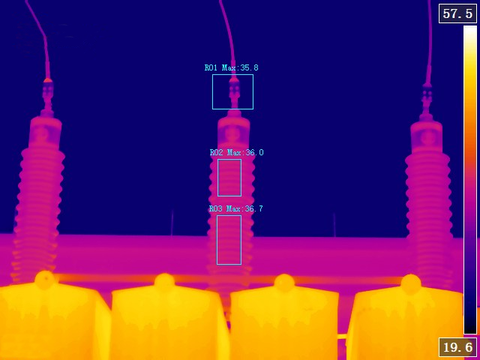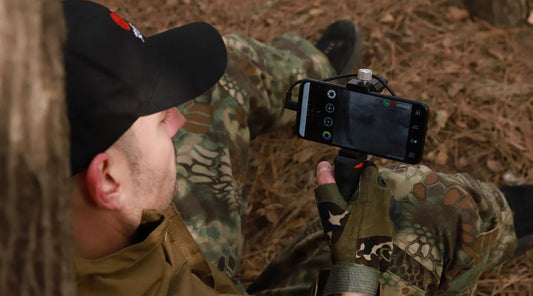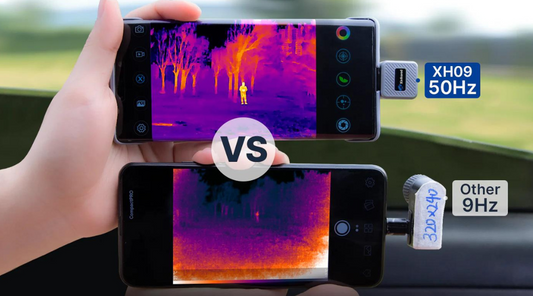How do Thermal Imaging Cameras Work?
Thermal imaging cameras are a valuable tool for detecting heat signatures and displaying them as a visible image. They are commonly used for security, surveillance, search and rescue, and industrial applications. In this article, we will explore how thermal imaging cameras work, their applications, and their advantages.
Basic Working Principles
Thermal imaging cameras detect the infrared radiation emitted by objects and convert it into a visible image. All objects emit infrared radiation, which is a type of electromagnetic radiation that is invisible to the human eye. This radiation is proportional to the object's temperature, and the hotter an object is, the more radiation it emits. Thermal imaging cameras use a detector to measure the infrared radiation emitted by objects and then create an image based on that data. There are two kinds of thermal imaging cameras: uncooled and cooled. Uncooled cameras use a detector that is sensitive to infrared radiation and does not require cooling. Cooled cameras use a detector that must be cooled to very low temperatures to increase their sensitivity to infrared radiation. Cooled cameras are more sensitive than uncooled cameras but are also more expensive.
Applications of Thermal Imaging Cameras
Thermal imaging cameras have a wide range of applications, including:
Security and Surveillance: Thermal imaging cameras are often used for security and surveillance purposes because they can detect heat signatures in complete darkness or low-light conditions. They can be used to detect intruders or to monitor the perimeter of a property.
Search and Rescue: Thermal imaging cameras are also used for search and rescue operations, such as finding lost hikers or locating survivors in disaster zones. They can detect the heat signatures of people or animals, even if they are hidden from view.
Medical Applications: Thermal imaging cameras are also used in medical applications, such as detecting cancer cells or monitoring the temperature of patients.
Building Inspections: Thermal imaging cameras can be used to detect insulation issues, moisture problems, and air leaks in buildings.
Electrical Inspections: Thermal imaging cameras can be used to detect overheating in electrical components, such as circuit breakers, transformers, and motors.
Mechanical Inspections: Thermal imaging cameras can be used to detect wear and tear on mechanical equipment, such as bearings and gears.
Law Enforcement and Security: Thermal imaging cameras are used by law enforcement and security personnel to detect intruders and monitor crowds.

Advantages of Thermal Imaging Cameras
There are several advantages of using thermal imaging cameras, including:
Ability to detect heat signatures in complete darkness or low-light conditions.
Ability to detect heat signatures through smoke, fog, and other obstructions.
Ability to detect heat signatures at a distance, making them ideal for surveillance and search and rescue applications.
Ability to detect temperature differences in objects, making them useful for industrial and medical applications.
Ability to See in Total Darkness: Thermal imaging cameras can detect heat signatures even in complete darkness, making them ideal for surveillance and search and rescue applications.
Non-Invasive: Thermal imaging cameras are non-invasive and do not require physical contact with the object being inspected. This makes them safe to use in a variety of environments.
Wide Range of Temperatures: Thermal imaging cameras can detect temperature differences from -40°C to 2000°C, making them useful for a wide range of applications.
Easy to Use: Thermal imaging cameras are easy to use and require minimal training. They can be operated by anyone with basic knowledge of the equipment.
Cost-Effective: Thermal imaging cameras are becoming more affordable, making them accessible to a wider range of users.

Xinfrared Outdoor Night Vision Thermal Imaging Camera
Xinfrared Outdoor Night Vision Thermal Imaging Camera has a high-resolution detector that captures clear images of heat signatures, even in complete darkness. It is equipped with advanced features such as image enhancement and noise reduction, which improve the quality of the thermal images.
Xinfrared Outdoor Night Vision Thermal Imaging Camera is ideal for day and night hunting, security, surveillance, and search and rescue applications. It can be used to detect intruders, monitor the perimeter of a property, and locate lost hikers or survivors in disaster zones.

Conclusion
Thermal imaging cameras are a valuable tool for detecting heat signatures and displaying them as visible images. They have a wide range of applications in areas such as building inspections, electrical inspections, mechanical inspections, law enforcement and security, and search and rescue operations. The advantages of thermal imaging cameras include their ability to see in total darkness, their non-invasive nature, their wide range of temperatures, their ease of use, and their cost-effectiveness. Xinfrared Outdoor Night Vision Thermal Imaging Camera is a high-quality thermal imaging camera that is specifically designed for outdoor use, making it ideal for security and surveillance applications.




